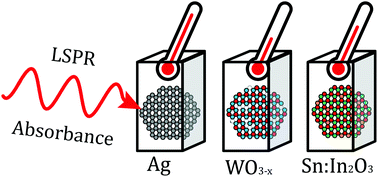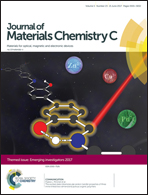Charge carrier concentration dependence of ultrafast plasmonic relaxation in conducting metal oxide nanocrystals†
Abstract
Electronically doped metal oxide nanocrystals exhibit tunable infrared localized surface plasmon resonances (LSPRs). Despite the many benefits of IR resonant LSPRs in solution processable nanocrystals, the ways in which the electronic structure of the host semiconductor material impact metal oxide LSPRs are still being investigated. Semiconductors provide an alternative dielectric environment than metallically bonded solids, such as noble metals, which can impact how these materials undergo electronic relaxation following photoexcitation. Understanding these differences is key to developing applications that take advantage of the unique optical and electronic properties offered by plasmonic metal oxide NCs. Here, we use the two-temperature model in conjunction with femtosecond transient absorption experiments to describe how the internal temperature of two representative metal oxide nanocrystal systems, cubic WO3−x and bixbyite Sn-doped In2O3, change following LSPR excitation. We find that the low free carrier concentrations of metal oxide NCs lead to less efficient heat generation as compared to metallic nanocrystals such as Ag. This suggests that metal oxide NCs may be ideal for applications wherein untoward heat generation may disrupt the application's overall performance, such as solar energy conversion and photonic gating.

- This article is part of the themed collection: Journal of Materials Chemistry C Emerging Investigators


 Please wait while we load your content...
Please wait while we load your content...